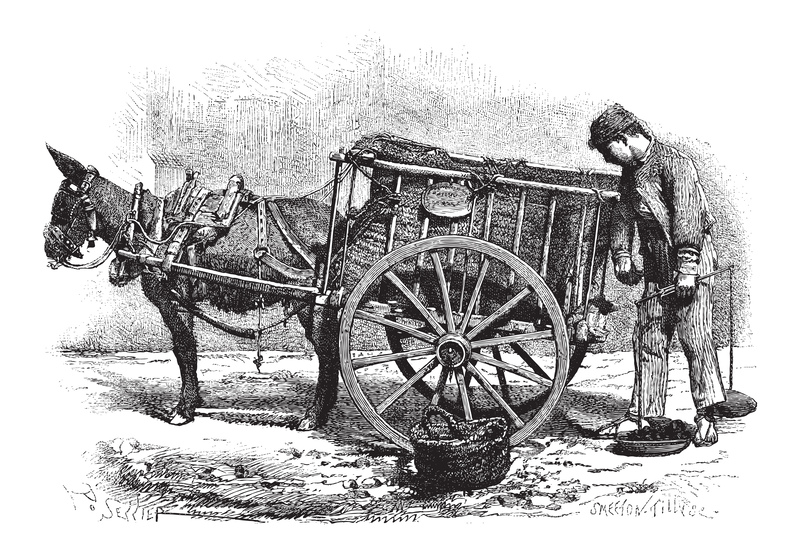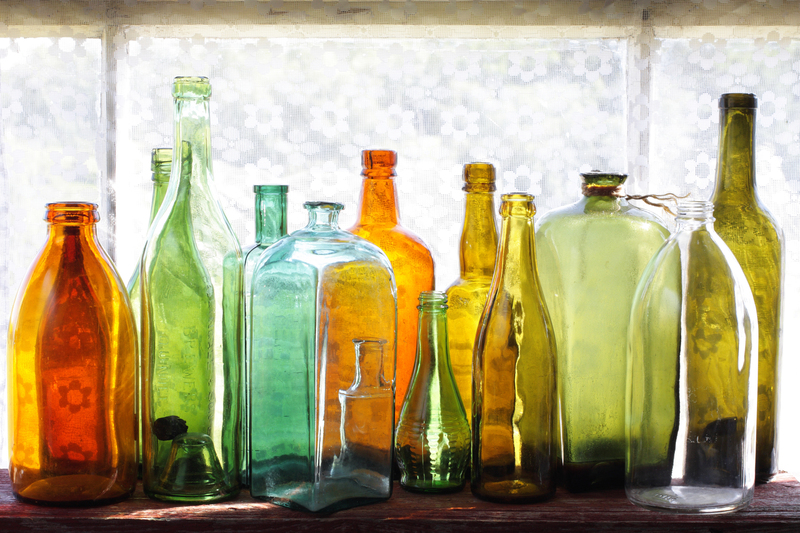Cleaning and Preparing Pots and Pans for Donation or Recycling: The Complete Guide
Are you wondering how to give your old cookware a new purpose? Whether your kitchen cabinets are overflowing, or you're going green by decluttering, knowing how to clean and prepare pots and pans for donation or recycling is essential. Properly preparing these kitchen essentials not only helps charitable organizations and recycling centers process them efficiently but also ensures they get a second life--either in another home or as repurposed material. In this article, we'll walk you through every step of the process, from evaluation and deep cleaning to final drop-off tips.

Why Bother Cleaning Pots and Pans Before Donation or Recycling?
Some might ask, "Why bother cleaning old cookware I'm getting rid of?" In truth, cleaning and preparing your pots and pans for recycling or donation serves several pivotal purposes:
- Charity Respect: Non-profits and shelters can only provide items in usable, hygienic condition to those in need.
- Efficient Recycling: Dirty materials (especially with food residue or grease) can contaminate recycling batches, making it more difficult to repurpose the materials.
- Sustainability: Proper preparation increases the likelihood that your pans will be reused or recycled--rather than ending up in landfill.
Step 1: Assess Your Pots and Pans
Before rushing to clean cookware for donation or recycling, assess what you have. Not all pots and pans are suitable for the same destinations.
Evaluate Condition for Donation
- Check for chips, cracks, excessive rust, significant warping, or missing parts.
- Ask yourself: Would I feel comfortable using this? If not, consider recycling instead.
- Nonstick pans with severe scratches or peeling surfaces are generally unsafe for health and aren't suitable for donation.
Evaluate for Recycling
- Pots and pans made from stainless steel, aluminum, or cast iron are typically accepted for scrap metal recycling, even with wear and tear.
- Heavily damaged pans, especially those unsafe for cooking, are better off recycled than donated.
Tip: Some recycling programs require removal of non-metal parts--like plastic handles or glass lids.
Step 2: Gather the Right Cleaning Supplies
To thoroughly clean your cookware before donation or recycling, assemble the following supplies:
- Dish soap and hot water
- Baking soda or white vinegar (for tough stains and odors)
- Steel wool, scrubbing pads, or non-abrasive sponges
- Old toothbrush (for crevices and handles)
- Towels or drying racks
- Optional: Goo Gone or rubbing alcohol (for sticky residues or stubborn adhesives)
Step 3: How to Clean Pots and Pans for Donation
1. Remove All Food and Grease
- Soak each pot or pan in hot, soapy water for 20-30 minutes to loosen baked-on residue.
- Scrub inside and out using a sponge or steel wool for tougher messes. Focus on any burnt spots or layering grease.
- Use an old toothbrush for handles, around rivets, or other hard-to-reach crevices.
2. Address Stubborn Stains and Odors
- Baking soda paste: Mix baking soda with a little water or vinegar and apply to stained areas. Let sit for 15 minutes before scrubbing.
- Vinegar soak: Fill the pan with a 1:1 mixture of water and white vinegar, heat until warm, let sit, then scrub.
- For sticky residues from labels or price tags, use Goo Gone or rubbing alcohol.
3. Clean Exteriors and Handles
- Wipe down the outside of the pan and all handles with soapy water. Don't forget the bottom--especially if there's scorched residue or grease buildup!
- Polish stainless steel or aluminum exteriors with a commercial cleaner if desired, but don't use harsh abrasives on nonstick cookware.
4. Dry Fully and Inspect
- Thoroughly dry each piece with a clean towel or air dry overnight.
- Ensure no grease, food residue, or lingering odors remain. Check for loose parts or lingering damage.
Step 4: Cleaning Pots and Pans for Recycling
If your cookware isn't suitable for donation, you can often still recycle its materials. Preparing pots and pans for recycling is similar to prepping for donation but with a little less focus on perfection.
1. Remove Non-Metal Materials
- Unscrew or carefully pry off plastic or wooden handles, knobs, or other accessories. This is especially important for drop-off at scrap yards or recycling centers.
- Discard these non-metal parts in normal trash if they aren't recyclable.
2. Quick Clean for Scrap Metal
- Remove large food scraps, heavy grease stains, and sticky labels. There's no need to go overboard--just ensure the pan doesn't have caked-on debris.
- Rinse with water and let dry.
3. Separate by Material
- Grouping stainless steel pots, aluminum pans, and cast iron will help recycling centers process your items efficiently.
- Check if your recycling provider has sorting requirements or asks for removal of non-metal components.
Step 5: Packaging and Preparing for Donation or Recycling Pickup
Donating Pots and Pans
- Wrap fragile lids or glass parts in newspaper or bubble wrap.
- Bundle smaller cookware inside larger ones to save space.
- Tie sets together or label matching lids and pots for easier sorting by the charity.
- Attach a short note indicating that the pans are fully cleaned and ready for reuse.
Recycling Pots and Pans
- Confirm whether your municipal recycling curbside program accepts cookware or if you need to bring them to a scrap yard or "hard to recycle" event.
- Place your grouped and cleaned pots and pans in a sturdy box or bin for drop-off.
- Be careful when handling heavy cast iron or large stacks--protect your hands from sharp edges or rust spots!
Where to Donate or Recycle Old Cookware
Where to Donate Used Pots and Pans
- Local shelters and soup kitchens: Often in need of extra cookware for residents or kitchen operations.
- Thrift stores: Goodwill, Salvation Army, and local secondhand shops typically accept gently used, clean cookware.
- Community centers and schools: Some programs accept kitchen equipment for cooking classes or family assistance.
- Online giving platforms: Use sites like Freecycle, Craigslist, or Facebook Marketplace to directly rehome your pots and pans with neighbors in need.
Where to Recycle Old Pots and Pans
- Municipal recycling centers: Some curbside programs accept metal cookware; check your local rules.
- Scrap metal yards: These facilities will pay (by weight) for clean metal pans, especially stainless steel, cast iron, and aluminum.
- Special recycling events: Many cities host "hard to recycle" events for items not accepted curbside, including old cookware.
- Manufacturer take-back programs: Some eco-conscious cookware brands offer recycling or trade-in on their products.
FAQs on Cleaning and Preparing Cookware for Reuse or Disposal
1. Can non-stick pans be donated or recycled?
Donated: Only if the non-stick coating is completely intact and free of scratches or peeling. Recycled: Most recycling centers do accept nonstick pans with the coating on, but always check your facility's requirements.
2. Do I have to remove all plastic parts for recycling?
It depends on your local recycling or scrap yard policy. If in doubt, remove what you can--it's usually preferred.
3. Can glass lids be recycled?
Tempered glass lids often cannot be recycled with regular glass due to different melting points. Instead, donate them with matching pots or consult your local recycling guide for "Pyrex" or cookware glass rules.
4. What about rusty or heavily stained pans?
Minor rust can be scrubbed away--don't use harsh abrasives on nonstick, but steel wool works for stainless steel or cast iron. Pans with deep rust, decay, or burnt-in residue should be recycled, not donated.

Top Tips for Eco-Friendly Disposition of Cookware
- Don't dump in the trash! Most cookware takes decades to break down in landfills and contains valuable, reusable metals.
- Get creative with reuse: Old pans can be upcycled into quirky planters, organizers, or craft projects.
- Check with recyclers first: Some areas only accept certain types of metal or require removal of certain parts. Calling ahead saves you a wasted trip.
Conclusion: Give Your Pots and Pans a Second Life
Taking the time to properly clean and prepare pots and pans for donation or recycling is a small but impactful step toward sustainable living. It ensures your once-loved cookware finds a new home or is transformed into new products, rather than languishing in a landfill. Whether you're moving, decluttering, or upgrading your kitchen, these best practices will help you responsibly and respectfully pass on your old pots and pans.
Remember: Every cleaned and properly prepared pan you rehome makes someone's meal a little easier or helps conserve vital resources through recycling. So gather those unused pots, roll up your sleeves, and make a positive difference today!